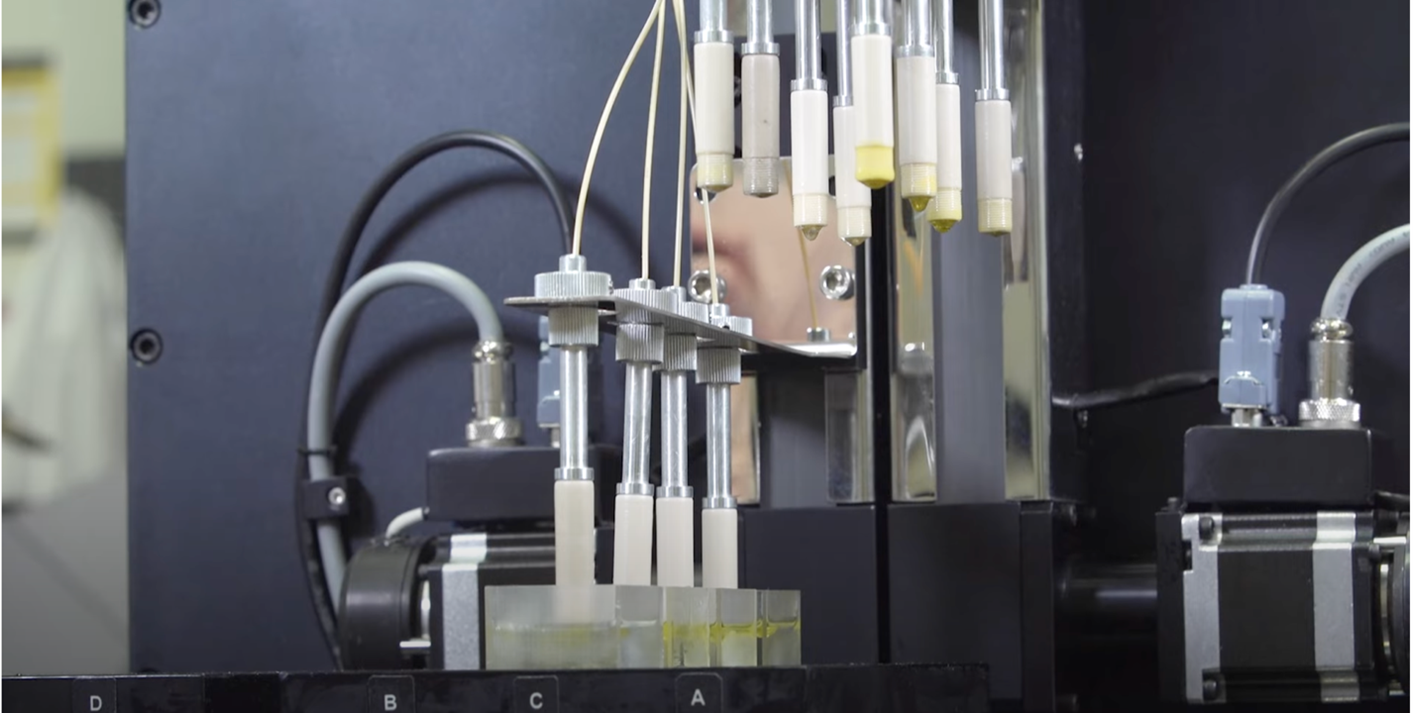Dr. Sushanta Mitra, executive director of the Waterloo Institute for Nanotechnology, and his research team have developed a robust prototype capable of delivering up to 200,000 supplement capsules in an hour.
The liquid-liquid encapsulation process involves introducing a drop of active ingredient into host solution, which contains a floating shell layer on the surface. As the core material interacts with the shell layer, a stable encapsulation is formed.
This encapsulation provides a protective barrier for the core material, shielding it from the host’s environment and enabling a time-delayed release of the active ingredient to a targeted area.
Mitra explains that what sets this technology apart is the entire process occurs in a liquid state, including the core, the shell, and the surrounding liquid.
He states that this liquid flexibility allows for a multitude of “core-shell” combinations, and researchers have already demonstrated at least 15 of these active ingredient combinations.
Additionally, the encapsulation process only takes 50 milliseconds, noted Mitra.
Avoiding microplastics
The University of Waterloo aligns its encapsulation technology with the United Nations' sustainable development goals, ensuring that its advancements contribute to a more sustainable and environmentally conscious future.
"This technology is at least 5000 times less energy-intensive compared to traditional methods, and it avoids the introduction of any microplastics in the encapsulation process,” Mitra stated.
Additionally, the nutrition industry faces a critical challenge posed by the widespread presence of microplastics, tiny plastic particles that result from the breakdown of larger plastics.
Microplastics act as carriers of persistent organic pollutants and heavy metals, transferring these harmful substances from lower trophic levels to higher ones.
The presence of microplastics is becoming known to affect the environment and humans alike. Their presence has been detected in various marine species, drinking water, and numerous food sources such as salt, honey, and marine organisms.
One study found that people consume an average of 39,000–52,000 microplastic particles per year.
And studies have shown that once absorbed, plastic micro- and nanoparticles can distribute throughout the body, reaching vital organs such as the liver, spleen, heart, lungs, thymus, reproductive organs, kidneys, and even the brain by crossing the blood-brain barrier.
Mitra notes that this microplastic-free method opens up new possibilities for encapsulation in various sectors, including nutraceuticals, pharmaceuticals, food and beverages, cosmetics, and personal care.
Encapsulation
Mitra explains that the efficiency and eco-friendly nature of this new encapsulation system makes it a promising solution for the nutrition industry.
He continues that in the nutraceutical sector, the use of soft gel filling encapsulation machines could lead to reduced operating costs and facilitate the development and production of new products.
Multiple core materials can be encapsulated and delivered in the same parcel, allowing for greater versatility and efficiency.
By encapsulating functional ingredients, such as vitamins, minerals, and antioxidants, this technology can enhance the stability and efficacy of nutraceutical formulations, ensuring their optimal delivery and absorption in the body, Mitra states.
Now, the University of Waterloo is collaborating with partners and product manufacturers in the Netherlands to integrate the next stage into their prototype.
It is the view of the university that this integration will allow for increased nutritional availability and usability for consumers.

